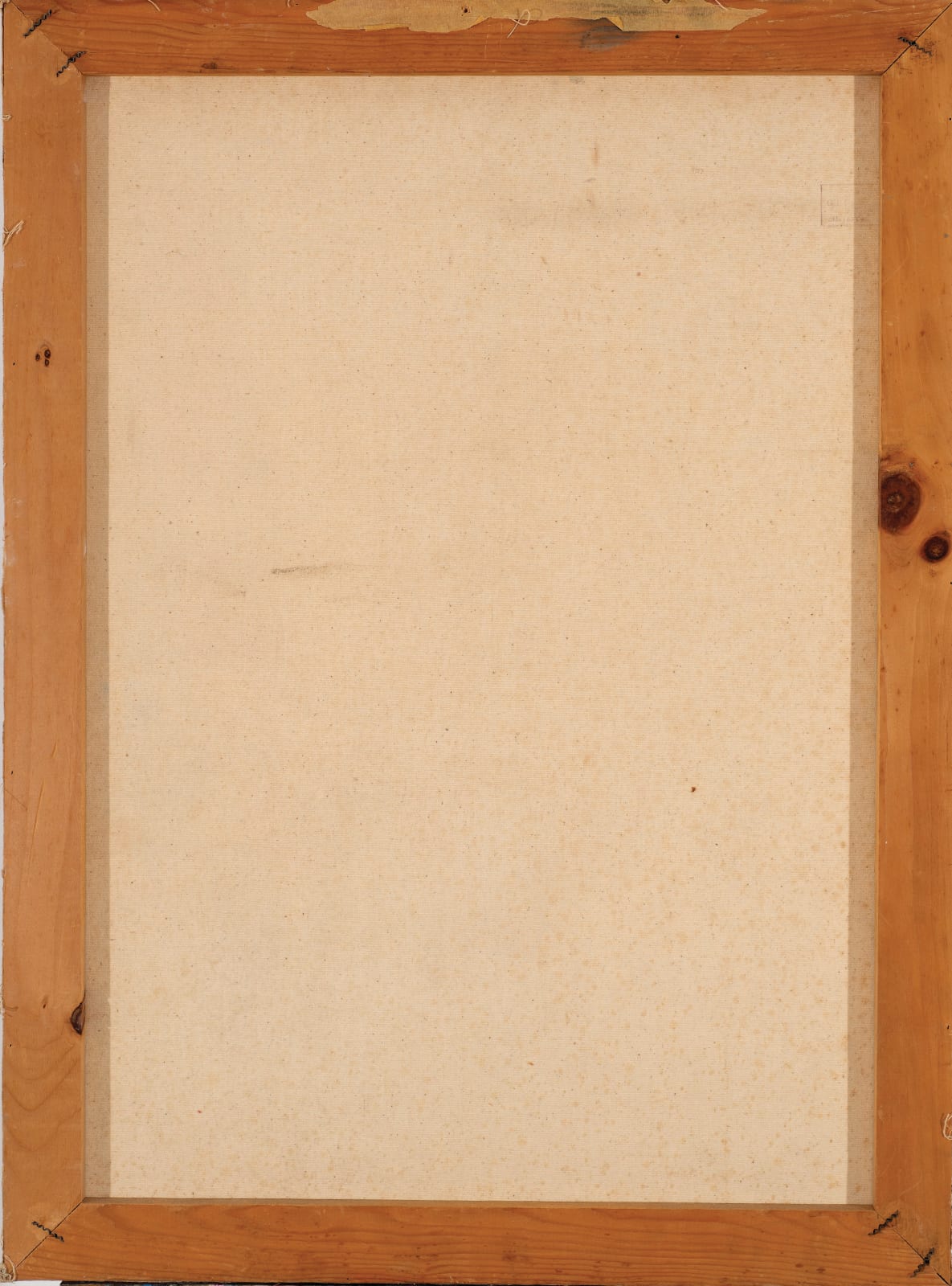Maqbool Fida Husain
Untitled (Surya), circa 1967
Oil on canvas
86 x 62.9 cm
33 7/8 x 24 3/4 in
33 7/8 x 24 3/4 in
Signed lower left
Further images
Husain recounted to Yashodhara Dalmia in 1992 the effect of the landmark exhibition Indian Classical Art at Dominions of India & Pakistan, held at London’s Royal Academy in 1948: “In...
Husain recounted to Yashodhara Dalmia in 1992 the effect of the landmark exhibition Indian Classical Art at Dominions of India & Pakistan, held at London’s Royal Academy in 1948:
“In 1948 after visiting Delhi with Souza where I saw all the Indian works and then I felt I should paint something else. Till then I was influenced by the Expressionists... I combined the form of the Gupta period, strong colours of the Basholi period and the innocence of folk art and worked on it and then came out with five paintings that were shown at the Bombay Art Society in 1949. Nobody had seen it – not even Souza. At the opening night he caught hold of me and took me to the Irani restaurant opposite and said, “Just tell me, what is this? Have you discovered something new?”
Husain was drawn to the image of the horse and rider from Indian mythology. From the figure of Surya. In this work Husain paints a trio of galloping, rearing horses being ridden by the goddess. Painted in the mid-1960s it has the typical fast brush technique used by Husain.
The image is also used in classical art. The goddess Selene is depicted riding her celestial horse-drawn chariot to pull the moon across the sky. Both do so for similar reasons; to show human dominance and strength and the raw animal power of the horse, a universal theme of appeal to any nationality.
The work was inherited by a Parisian family from the XVIIe arrondissement. Their parents were collectors and acquired several Indian art works in the 1960s on their travels. They also had paintings by Gulam Rasool Santosh and a Laxman Pai in their collection.
“In 1948 after visiting Delhi with Souza where I saw all the Indian works and then I felt I should paint something else. Till then I was influenced by the Expressionists... I combined the form of the Gupta period, strong colours of the Basholi period and the innocence of folk art and worked on it and then came out with five paintings that were shown at the Bombay Art Society in 1949. Nobody had seen it – not even Souza. At the opening night he caught hold of me and took me to the Irani restaurant opposite and said, “Just tell me, what is this? Have you discovered something new?”
Husain was drawn to the image of the horse and rider from Indian mythology. From the figure of Surya. In this work Husain paints a trio of galloping, rearing horses being ridden by the goddess. Painted in the mid-1960s it has the typical fast brush technique used by Husain.
The image is also used in classical art. The goddess Selene is depicted riding her celestial horse-drawn chariot to pull the moon across the sky. Both do so for similar reasons; to show human dominance and strength and the raw animal power of the horse, a universal theme of appeal to any nationality.
The work was inherited by a Parisian family from the XVIIe arrondissement. Their parents were collectors and acquired several Indian art works in the 1960s on their travels. They also had paintings by Gulam Rasool Santosh and a Laxman Pai in their collection.
Provenance
Private collection, ParisExhibitions
South Asian Modern Art 2022, Grosvenor Gallery, London, 10 June - 1 July 2022, No. 19, (illustrated in the exhibition catalogue)







